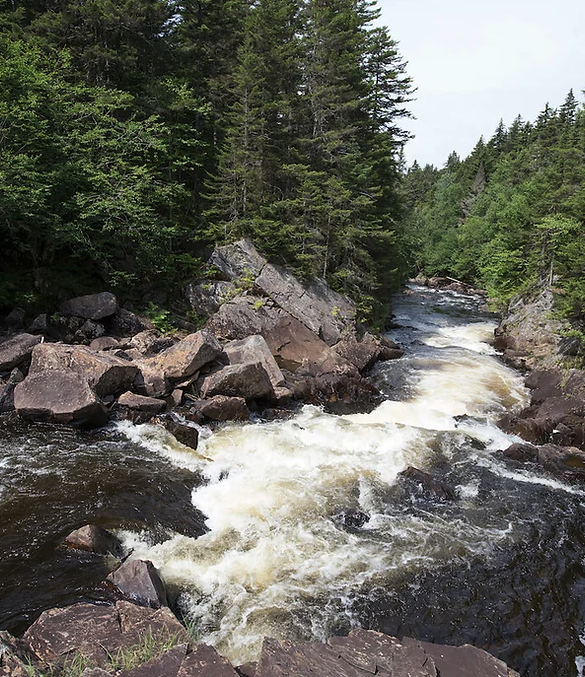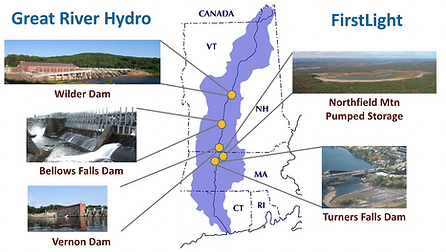
A Science-based Approach to River Advocacy
New England is exceedingly fortunate to have an abundance of river networks that provide a range of recreational and economic opportunities, as well as habitat for numerous wildlife species. At 410 miles long, the Connecticut River is the region’s largest river and plays a vital role in the communities it touches in New Hampshire, Vermont, Massachusetts, and Connecticut.
The Connecticut River Conservancy (CRC) has acted as the river’s main caretaker for more than 70 years. It uses biologists, scientists, and other experts to monitor water quality, address invasive species, remove obsolete dams, study migratory fish patterns, promote accessibility, and develop policy. That’s a lot of responsibility for a nonprofit with a limited budget, which the organization’s leaders say is achievable through donations and a large dose of collaboration.
According to Kate Buckman, CRC’s NH River Steward who holds a PhD in oceanography, facts and science are critical to CRC’s work and directionality.
“We always look to science to guide us as we work toward a clean, healthy, and resilient watershed,” Buckman says.
At the top of CRC’s current priority list is the relicensing of five hydroelectric facilities on the river. The Federal Energy Regulatory Commission (FERC) is responsible for overseeing the dams and determining how the impacts of those operations should be mitigated. The agency is accepting public comments until May 22, 2024.
Buckman says that because the river is a public resource, FERC is required to ensure that hydroelectric operators protect the ecological health of the river and that adjacent communities are not negatively affected. The licenses are essentially contracts between the operators and the public.
Since these licenses will not be subject to renewal for several decades, CRC strongly believes that stakeholders who are impacted by the river–from anglers and paddlers, to outfitters and restaurants–should make written comments to FERC about the relicensing. Buckman says that comments do not need to be lengthy, but should include reasons why the river requires protection from impacts associated with hydroelectric operations.
“The people who live or recreate on the river are the local experts and know the issues related to these (hydroelectric) facilities,” Buckman says. “Since FERC is in Washington, DC, it's valuable for them to hear the local perspectives. Those interested in commenting might consider why the river matters to them, and then try to convey that to FERC.”
CRC posits that a diverse constituency of public commenters will have a larger impact on regulators. The nonprofit has assembled a list of suggested key issues that FERC should consider, including:
Safe, timely, and effective upstream and downstream fish passage;
Operational changes at the dams to minimize both upstream and downstream surface water fluctuations to reduce bank erosion and impacts to rare and threatened species;
Healthy aquatic habitat for wildlife;
Seasonally appropriate minimum flows in the river channel;
Ecologically compatible and accessible recreational facilities;
Protection and interpretation of historic and archeological resources;
Equal consideration of Indigenous People’s traditional cultural properties.
Buckman reiterates that with the comment deadline looming on May 22, stakeholders have just a few weeks to participate. CRC provides information and instructions for making comments on its website, which can be found here.
The outdoor economy has a vested interest in the health and long-term viability of the Connecticut River. As such, actively engaging with groups like CRC and its efforts to increase the number and quality of public comments to FERC is not just good for the river, but for anyone who relies on the array of benefits that the river provides.
GO Sustainable Tip of the Month
Greenhouse gas (GHG) and other sustainability regulations are coming to a jurisdiction near you soon. Becoming acquainted with the U.S. SEC’s reporting requirements and California’s two new laws will help enterprises anticipate changes that are headed for the U.S. market. Likewise, companies that operate in Europe–and even those in the supply chain–may be exposed to the rigors of the EU’s Corporate Sustainability Reporting Directive. It is strongly advised that companies understand the risks and opportunities associated with these new rules. While many regulations and laws will be challenged in court (and some currently are), there is little doubt that some form of GHG accountability will soon impact most businesses. Remember, it’s not leaning over your skis to take a proactive and measured approach to these requirements; it could even enhance market share and reputation, while driving innovation.
Andrew Schuyler splits his time between Conway, NH and Melrose, MA. He serves on the board of the White Mountains Interpretive Association and has a background in journalism, clean tech, sustainability, and government affairs. He enjoys hiking, swimming, and ultimate frisbee, and has yet to find any redeeming value to ticks or black flies. Reach him at andrewschuyler@hotmail.com.




